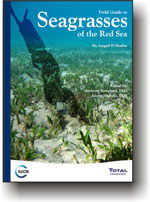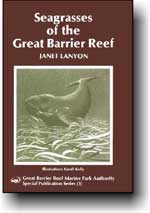Identifying Tropical Seagrass
What are Seagrass
Seagrasses are a functional group, not a taxonomic group, of angiosperms (flowering plants), i.e. various seagrass families do not necessary have to be closely related.
Debate continues in the literature and between seagrass taxonomists on the details (particularly below sub class) on the correct classification. For example, the Angiosperm Phylogeny Group published several papers recommending angiosperm classification, and is considered by many to represent the “standard”. However many prominent seagrass taxonomists disagree. From the advice of Dr Don Les (University of Connecticut) and Assoc. Prof Michelle Waycott (The University of Adelaide), this is the best we have been able to compile:
-
Kingdom: Plantae
Division: Magnoliophyta (Angiosperms)
Class: Liliopsida
Sub class: Alismatidae
Order: Alismatales
Family: Hydrocharitaceae
Order: Potamogetonales
Family: Cymodoceaceae, Posidoniaceae, Potamogetonaceae, Ruppiaceae, Zannichelliaceae and Zosteraceae
Please note: This classification is an opinion of Seagrass-Watch HQ based on the best information available. Seagrass-Watch HQ recommends that users exercise their own skill and care with respect to their use of this classification and that users carefully evaluate the accuracy, currency, completeness and relevance of the material on the web site for their purposes.
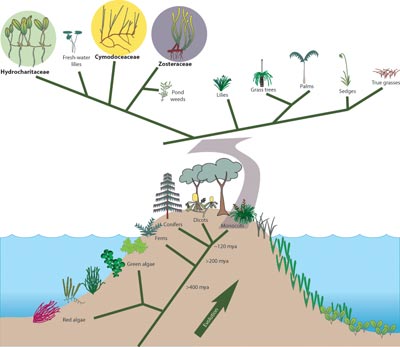
Seawater temperatures above 40ºC will stress tropical seagrass.
Death occurs at temperatures above 43ºC
How to identify seagrass
Seagrasses are unique flowering plants that have evolved to live in sea water. Seagrasses belong to a group of plants known as angiosperms(flowering plants). Various common names are applied to seagrass species, such as turtle grass, eelgrass, tape grass, spoon grass and shoal grass. These names are not consistently applied across countries. They are called “seagrass” because most have ribbon‐like, grassy leaves. There are many different kinds of seagrasses and some do not look like grass at all. Seagrass range from the size of your fingernail to plants with leaves as long as 7 metres.
Like terrestrial (land living) plants, a seagrass can be divided into its leaves (which contain veins), stem, roots (buried in the substrate) and reproductive parts such as flowers and fruits. Algae do not have veins in their leaves nor do they possess roots (anchoring to the surface of the substrate by a holdfast) or produce flowers or seeds (more info).
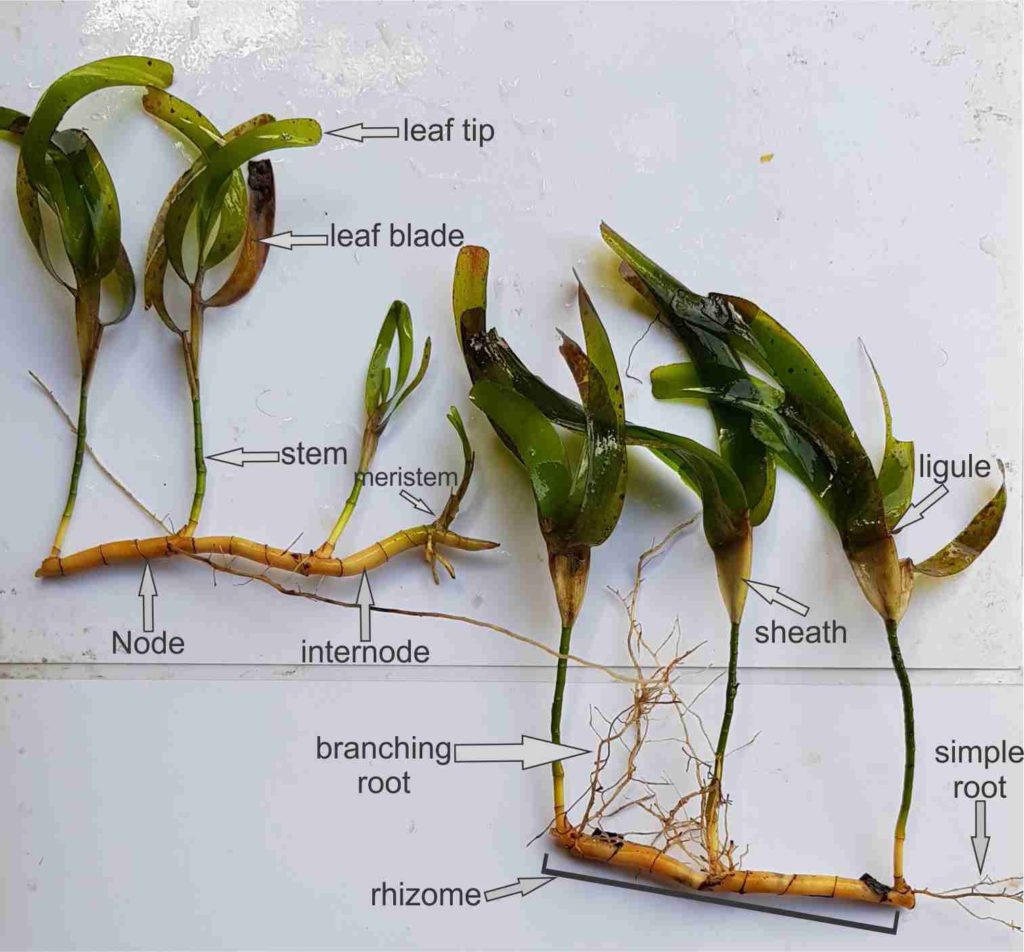
Some of the shapes and sizes of leaves of different species of seagrass include an oval (paddle or clover) shape, a fern shape, a long spaghetti like leaf and a ribbon shape. Species that have a paddle or fern shaped leaf are called Halophila. Ones that have a ribbon shaped leaf are the Cymodocea, Thalassia, Thalassodendron, Halodule and Zostera. Spaghetti‐like seagrass is called Syringodium.
At the base of a leaf is a sheath, which protects young leaves. At the other end of a leaf is the tip, which can be rounded or pointed. The vertical stem, found in some species, is the upright axis of the plant from which leaves arise (attach). The remnants of leaf attachment are seen as scars.
The roots and horizontal stems (rhizomes) of seagrass are often buried in sand or mud. They anchor the plant, store carbohydrates and absorb nutrients. Roots can be simple or branching and all have fine hairs to help absorb nutrients. Rhizomes are formed in segments with leaves or vertical stems rising from the joins, called nodes or scars.
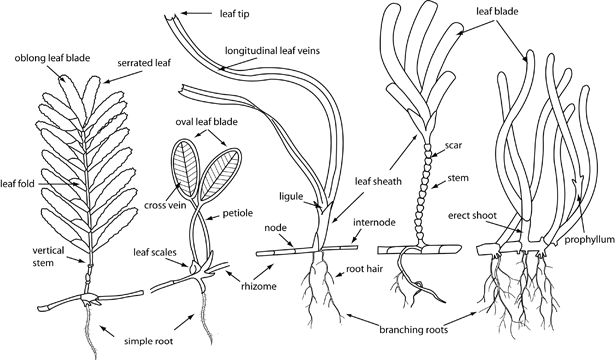
Composite illustration demonstrating morphological features used to distinguish main seagrass taxonomic groups. By Len McKenzie (2008).
Sections between the nodes are called internodes. Seagrasses depend upon the growth of rhizomes to increase the area they occupy. This vegetative growth is the most common mode of growth for seagrasses. Although the rhizome mainly runs horizontally, some lateral branches are more or less erect and bear leaves (erect shoots). Sometimes the leaves are on a special type of stalk, called a petiole.
Identifying Tropical Indo-Pacific Seagrasses
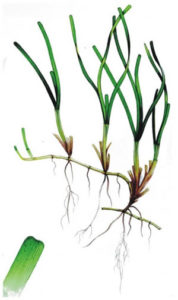
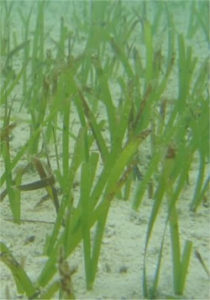
- Flat, strap-like leaves 2-4mm wide
- Rounded, smooth leaf tip
- Smooth rhizome
- Scars from well developed leaf sheaths form a continuous ring around the stem
- Found on shallow reef flats
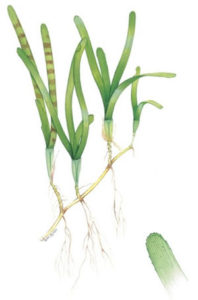
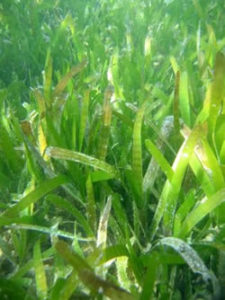
- Linear strap-like leaves, 5-9mm wide
- Serrated leaf tip
- Leaf sheath is broadly triangular with a narrow base
- Leaf scars do not form a continuous ring around the stem
- Found on shallow subtidal reef flats and sand banks
Please note: Revision of Cymodoceaceae has resulted in recognition of four-genera and the renaming of Cymodocea serrulata to Oceana serrulata (R.Brown) Byng & Christenhusz 2018. Synonyms of this species include: Cymodocea serrulata and Caulinia serrulata. See Christenhusz et al. (2018) More information
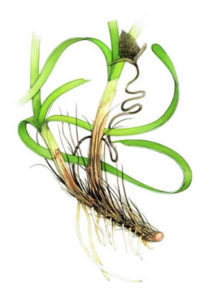
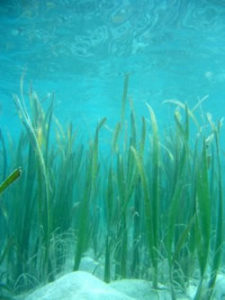
- Very long ribbon-like leaves 30-150 cm long
- Leaves with inrolled leaf margins
- Thick rhizome with long black bristles and cord-like roots
- Found on shallow/intertidal sand/mud banks (often adjacent to mangrove forests)
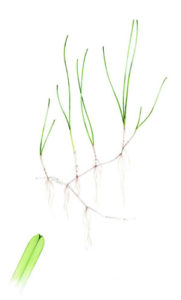
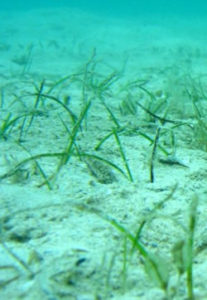
- Fine, delicate leaves up to 20cm long
- 1 central vein
- Black central vein splits into two at the rounded leaf tip
- Usually pale rhizome, with clean black leaf scars
- Found on intertidal sand banks
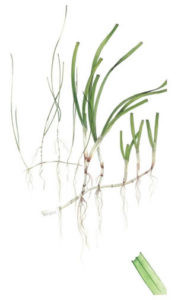
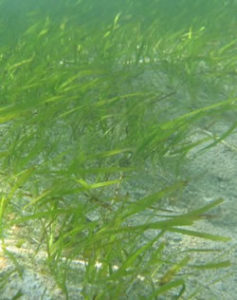
- Usually larger than Halodule pinifolia
- Trident leaf tip
- 1 central longitudinal vein
- Rhizome usually pale ivory, with clean black leaf scars
- Dugong preferred food
- Found on shallow/intertidal sand or mud banks
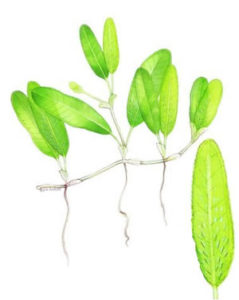
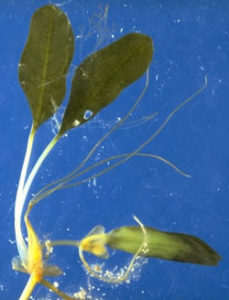
- Small oval leaves that are hairy on one side
- Central vein on leaf with 9-14 cross veins
- Usually found deeper than 10m in coral environments proximal to coral reefs
- Only found in subtidal Australian waters (>10m) proximal to coral reefs
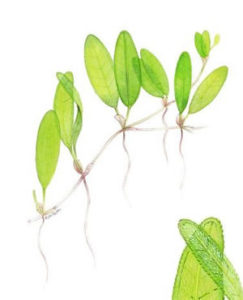
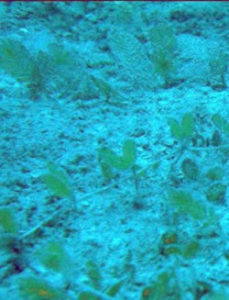
- Small oval leaf blade 1-2.5cm long
- 6-8 cross veins
- Leaf hairs on both sides
- Leaves usually longer than wider
- Found at subtidal depths (>10m)
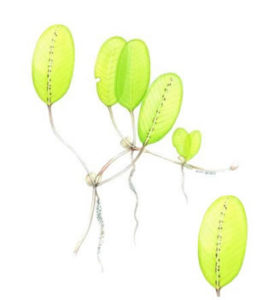
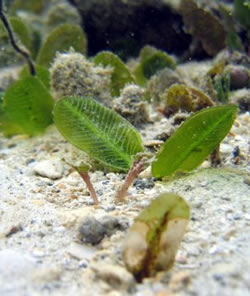
- Oval shaped leaves in pairs
- 8 or more cross veins
- No hairs on leaf surface
- Preferred dugong food
- Common early colonising species
- Found from intertidal to subtidal depths
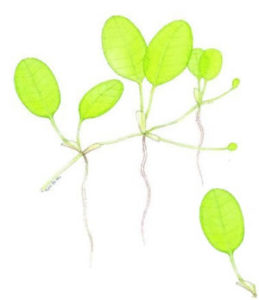
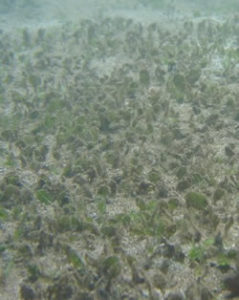
- Less than 8 pairs of cross veins
- Small oval leaves occurring in pairs
- Wedge-shaped leaf sheath
- Found on shallow/intertidal sand flats
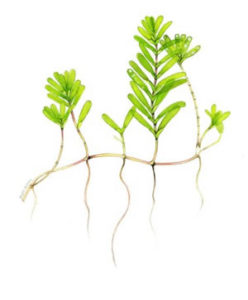
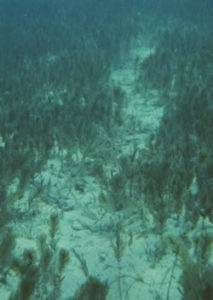
- Fern like
- Leaves arranged in opposite pairs
- Erect shoot up to 15cm long
- Found at subtidal depths (>10m
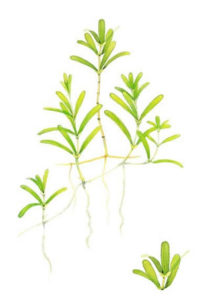
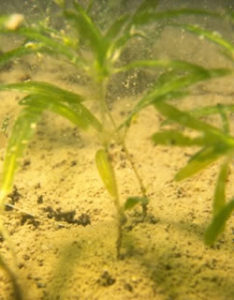
- Erect shoots 8-18cm long
- Leaves with 3 veins
- 2-3 leaves at each node
- Leaves “whorl” around stem
- Found at subtidal depths (>10m)
- Endemic to Queensland, Australia
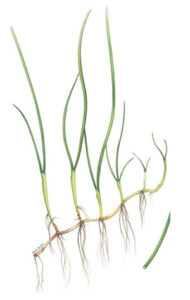
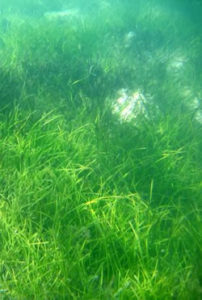
- Cylindrical in cross section (spaghetti like)
- Leaf tip tapers to a point
- Leaves 7-30cm long
- Found on shallow subtidal reef flats and sand banks
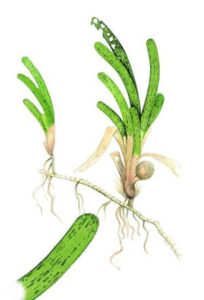
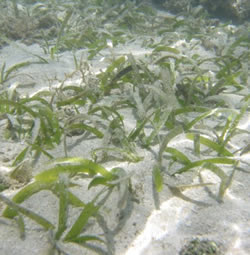
- Short black bars of tannin cells in leaf blade
- Thick rhizome with scars between shoots
- Hooked/curved shaped leaves
- Leaves 10-40cm long
- Common on shallow reef flats
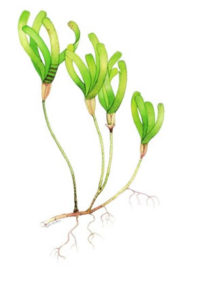
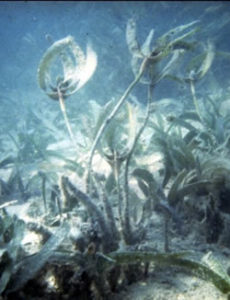
- Cluster of ribbon-like curved leaves at the end of an erect stem
- Round, serrated leaf tip
- Tough, woody rhizomes with scars from successive shoots
- Very coiled, branched roots
- Typically found in rocky areas with strong reef crests
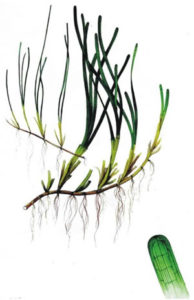
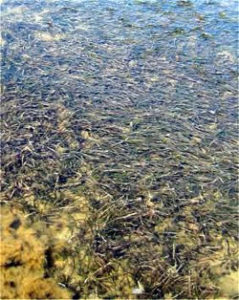
- Long strap-shaped leaves
- 5 longitudinal veins
- Cross veins which form a mesh across leaf blade
- Rounded leaf tip
- Leaf grows straight from rhizome ie. no stem
- Found on shallow and intertidal mud/sand flats
Please note: Advances in research reveal multiple lines of evidence for conserving four distinct genera in the family Zosteraceae and the reclassification of Zostera muelleri to Nanozostera muelleri (Irmisch ex Ascherson) Tomlinson & Posluszny, 2001. Synonyms of this species include: Zostera muelleri subsp. capricorni; Zostera muelleri subsp. muelleri; and Zostera capricorni. See Sullivan & Short (2023)
Recommended Reads
Field Guide to Seagrasses of the Red Sea
El Shaffai A. (2016). Field Guide to Seagrasses of the Red Sea. Rouphael, A.and Abdulla, A., eds. First Edition56pp. [2.8Mb]
Guide to the identification of seagrasses in the GBR
Lanyon J (1986). Guide to the identification of seagrasses in the Great Barrier Reef region. Great Barrier Reef Marine Park Authority Special 54pp. [3.3Mb]
A guide to tropical seagrasses of the Indo-West Pacific
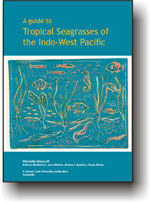
Waycott M, McMahon K, Mellors J, Calladine A and Kleine D (2004) A guide to tropical seagrasses of the Indo-West Pacific. James Cook University, Townsville. 72pp.
